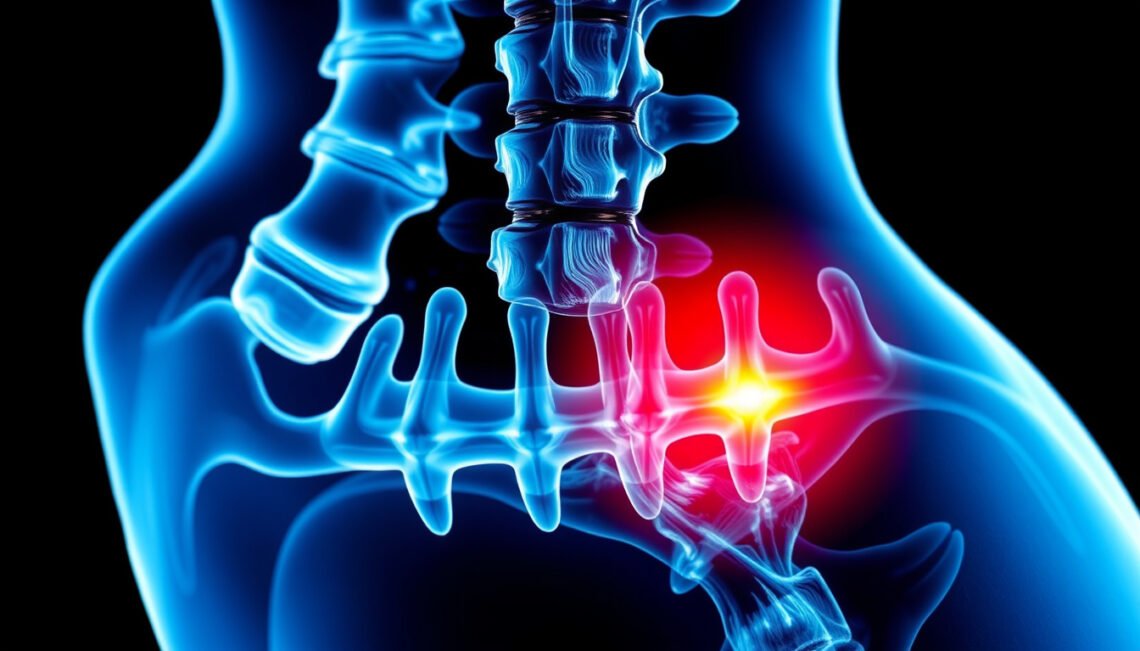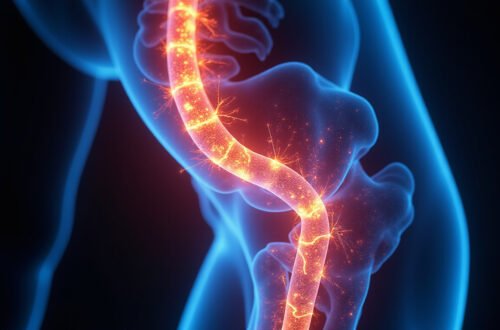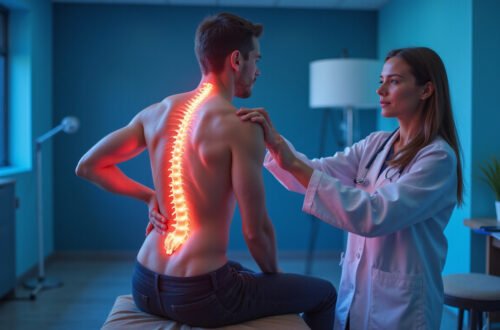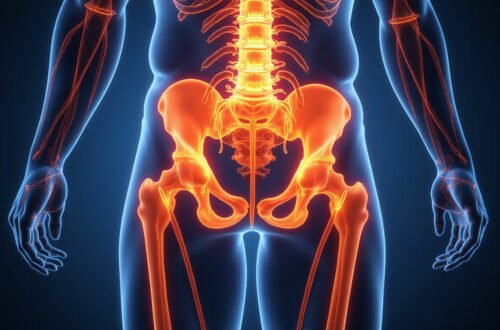A herniated disc is a common spinal condition that can cause significant discomfort and impact your daily activities. Recognizing herniated disc symptoms early is crucial for finding effective treatment options to manage pain and prevent further complications. Whether you’re dealing with nagging back pain or sharp nerve-related issues, understanding what a herniated disc entails can empower you to seek the right care.
In this article, we’ll explore the typical symptoms associated with a herniated disc, outline the range of treatment options available, and provide practical advice to help you on your path to recovery.
What Is a Herniated Disc?
A herniated disc, also known as a slipped or ruptured disc, occurs when the soft, gel-like center of a spinal disc (nucleus pulposus) pushes through a tear in the tougher outer layer (annulus fibrosus). This displacement can irritate nearby nerves and lead to a range of symptoms, particularly in the lower back or neck. Herniated discs most often arise from age-related wear and tear or sudden injury.
Common Herniated Disc Symptoms to Watch For
Herniated disc symptoms can vary widely depending on the disc’s location and the extent of nerve involvement. Here are the most prevalent signs:
1. Pain in the Back or Neck
Pain localized to the affected area of your spine is often the first symptom. For lumbar disc herniation, this manifests as lower back pain. For cervical herniations, you may experience neck pain.
2. Radiating Pain or Sciatica
If the herniated disc compresses a spinal nerve, pain may radiate down the arms or legs. Sciatica is a classic example where lumbar herniation causes sharp, shooting pain along the sciatic nerve pathway down the leg.
3. Numbness and Tingling
Compressed nerves can cause sensations of numbness or tingling (“pins and needles”) in the limbs or buttocks depending on the disc location.

4. Muscle Weakness
In some cases, nerve compression weakens muscles controlled by the affected nerves, leading to decreased strength in the arms or legs.
5. Difficulty Moving or Performing Routine Activities
Due to pain and weakness, simple tasks like walking, bending, or lifting objects may become challenging.
Diagnosing a Herniated Disc
If you experience these symptoms, a physician will perform a physical exam to check reflexes, muscle strength, and sensory changes. Imaging tests such as MRI or CT scans are often necessary to confirm a herniated disc diagnosis and determine the severity.
Herniated Disc Treatment Options: From Conservative to Surgical
The good news is that many people with herniated discs recover fully with non-surgical methods. Treatment plans depend on symptom severity, location, and individual health factors.
1. Conservative Treatments
- Rest and Activity Modifications: Short-term rest helps reduce inflammation, but prolonged inactivity may worsen symptoms. Gradually resuming normal activities is crucial.
- Medications: Over-the-counter pain relievers like ibuprofen or acetaminophen can manage pain and inflammation. In some cases, doctors prescribe muscle relaxants or nerve pain medications.
- Physical Therapy: Tailored exercises improve spinal flexibility, strengthen core muscles, and alleviate nerve pressure.
- Heat and Cold Therapy: Applying ice packs or heat pads can reduce swelling and soothe muscle spasms.
- Epidural Steroid Injections: Injections of corticosteroids near affected nerves can reduce inflammation and relieve pain temporarily.
2. Surgical Treatments
If symptoms persist beyond 6-12 weeks despite conservative care or if significant neurological deficits develop (e.g., severe weakness, loss of bladder control), surgery may be necessary. Common procedures include:
- Discectomy: Removal of the herniated disc portion to relieve nerve pressure.
- Laminectomy: Removing part of the vertebra to increase spinal canal space.
- Spinal Fusion: Joining two or more vertebrae to stabilize the spine.
Surgery typically has favorable outcomes but requires a thorough discussion of risks and benefits with your healthcare provider.
Lifestyle and Home Remedies to Support Recovery
Alongside medical treatments, lifestyle changes can expedite healing and prevent recurrence of herniated discs:
- Maintain good posture, especially when sitting for extended periods.
- Use ergonomic chairs and supportive mattresses.
- Engage in low-impact exercises like swimming or walking.
- Avoid heavy lifting or twisting motions.
- Maintain a healthy weight to reduce spine stress.
Herniated Disc vs. Bulging Disc: What’s the Difference?
People often confuse herniated and bulging discs. A bulging disc occurs when the disc extends outward but the outer layer remains intact. It can cause discomfort or no symptoms at all. A herniated disc is more serious as the nucleus pulposus escapes through a tear, often leading to nerve irritation.
FAQ: Herniated Disc Clarifications
Q1: How can I tell if my back pain is from a herniated disc?
A: Herniated disc pain often radiates along the nerve path (e.g., sciatica) and comes with numbness or weakness. Persistent localized back pain alongside neurological symptoms should prompt medical evaluation.
Q2: Can a herniated disc heal on its own?
A: Yes, many herniated discs improve over weeks to months with conservative care as the body reabsorbs the displaced material and inflammation decreases.
Q3: What are the risks of surgery for a herniated disc?
A: Potential risks include infection, nerve damage, or recurrence of the herniation, but modern techniques minimize complications. Surgery is usually considered only when necessary.
Conclusion: Take Control of Your Herniated Disc Today
If you suspect you have a herniated disc, early diagnosis and appropriate treatment are vital to reduce pain and restore mobility. By understanding herniated disc symptoms and exploring all treatment options—from physical therapy to surgery—you can make informed decisions with your healthcare provider. Don’t let back pain or nerve symptoms limit your life; seek professional advice and commit to a recovery plan today.
For additional trusted information on spinal health and herniated disc management, the Mayo Clinic provides comprehensive resources that can help guide you (source).
Take the first step toward relief and better spine health now—schedule a consultation with a spine specialist and start your personalized treatment journey. Your back will thank you!






